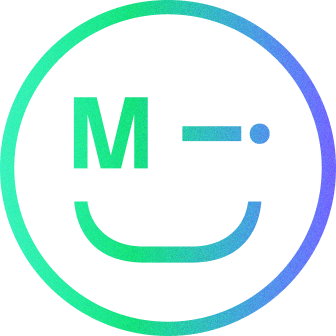In the London design industry landscape, collaboration has become the cornerstone of innovation and success. Traditionally, the agency-client relationship has been characterised by a more hierarchical structure, with the agency often receiving briefs and then completing these for clients. However, a notable shift is underway, steering the industry towards more collaborative approaches. This evolution recognises the value of synergising ideas and expertise from both sides, fostering a partnership where clients and agencies actively engage in a co-creative process. Embracing this shift opens the door to a wealth of perspectives, insights, and shared responsibilities, ultimately leading to more innovative and impactful design solutions.
Breaking traditional barriers: why collaboration matters
In the ever-evolving design agency landscape, there’s a growing recognition of the transformative power of collaboration, challenging traditional barriers that once championed the concept of solitary genius. The shift towards embracing a collaborative mindset signifies a departure from outdated notions that confined innovation to individual brilliance. By breaking down these barriers, we not only open the door to diverse perspectives but also tap into a collective intelligence that propels creativity to new heights. The benefits of this collaborative approach are profound, fostering a rich exchange of ideas, cross-pollination of skills, and a shared sense of ownership. In doing so, we not only challenge the status quo but also pave the way for a more inclusive, dynamic, and forward-thinking creative industry that thrives on the collective genius of its collaborators.
The power of open dialogue and shared visions
Harnessing the power of open dialogue and shared visions lies at the heart of successful collaborations between design agencies and clients. Effective communication becomes the linchpin, connecting the two entities and ensuring a mutual understanding of goals. Aligning objectives is crucial, as it forms the basis for a harmonious partnership. It involves not only conveying expectations but also actively listening to the client’s aspirations, creating a shared vision that guides the creative process. Strategies for effective agency-client communication encompass transparent channels, regular check-ins, and a proactive approach to addressing concerns. By fostering a culture of open dialogue and goal alignment, design collaborations can flourish, leading to solutions that not only meet but exceed expectations through a shared commitment to success.
Merging strengths: the synergy of agency and in-house teams
The merger of agency and in-house teams signifies a powerful synergy. This collaboration allows for the leverage of diverse skills and perspectives from both sides. Agency teams bring external expertise, innovative approaches, and a broad industry outlook, while in-house teams contribute intricate knowledge of the brand, its values, and a deep understanding of the target audience.
Co-creation: a strategy for innovative solutions
The co-creation process involves joint brainstorming and workshops, where the collaborative efforts of all stakeholders bring forth a wealth of perspectives and ideas. The active involvement of customers is a pivotal aspect of the co-creation process, as it not only ensures their needs and preferences are considered but also taps into the invaluable insights they provide. By inviting customers to be integral contributors, co-creation becomes a dynamic and inclusive strategy, breaking down traditional barriers between creators and consumers. This approach not only cultivates a sense of shared ownership in the creative process but also leads to solutions that are more resonant, user-centric, and reflective of a broader spectrum of experiences.
Adaptability in collaboration: staying agile in a changing market
In the ever-evolving landscape of collaboration, adaptability emerges as a key factor in staying agile amidst market changes. Recognising the dynamic nature of the industry, there is a need for flexibility in partnerships. This flexibility extends to the ability to adapt strategies promptly in response to shifts within the market. Embracing an adaptable mindset not only allows collaborators to navigate uncertainties effectively but also enables them to seize opportunities and address challenges in real time. The essence of adaptability lies in a willingness to reassess and recalibrate approaches, ensuring that collaborative efforts remain dynamic, resilient, and capable of thriving in the face of evolving market dynamics.
Celebrating joint successes: The impact of shared victories
The celebration of joint successes within a collaborative framework carries a profound impact, fostering a sense of shared accomplishment and reinforcing the strength of collective efforts. Recognising and celebrating collaborative achievements not only acknowledges the hard work and dedication of all parties involved but also cultivates a positive and motivating environment. Shared successes serve as powerful milestones, instilling a collective sense of pride and accomplishment that goes beyond individual contributions. This shared joy not only enhances team morale but also fuels a continuous drive towards future collaborative endeavours.
Building long-term value through collaborative efforts
At Make it Clear, we believe building long-term value through collaborative efforts is a strategic imperative that extends beyond immediate gains. By aligning collaborative initiatives with market trends, businesses can ensure sustained impact over the long term. This approach involves not only adapting to current market dynamics but also actively participating in shaping and setting new industry standards through collaboration. The synergy created by pooling resources, expertise, and insights allows collaborators to stay ahead of the curve, driving innovation and influencing the trajectory of their respective industries. Through this forward-thinking collaboration, organisations can establish themselves as pioneers, contributing to the evolution of industry standards and securing lasting value in the competitive landscape.
Why choose Make it Clear for your design needs
Make it Clear is a London-based design agency with a proven record of user experience and user interface design for clients such as Cambridge University Press, the Ministry of Defence and Virgin Media. Trading for over 20 years, we create research-led design solutions that focus on clarity to improve interactions, drive results and reduce costs.

